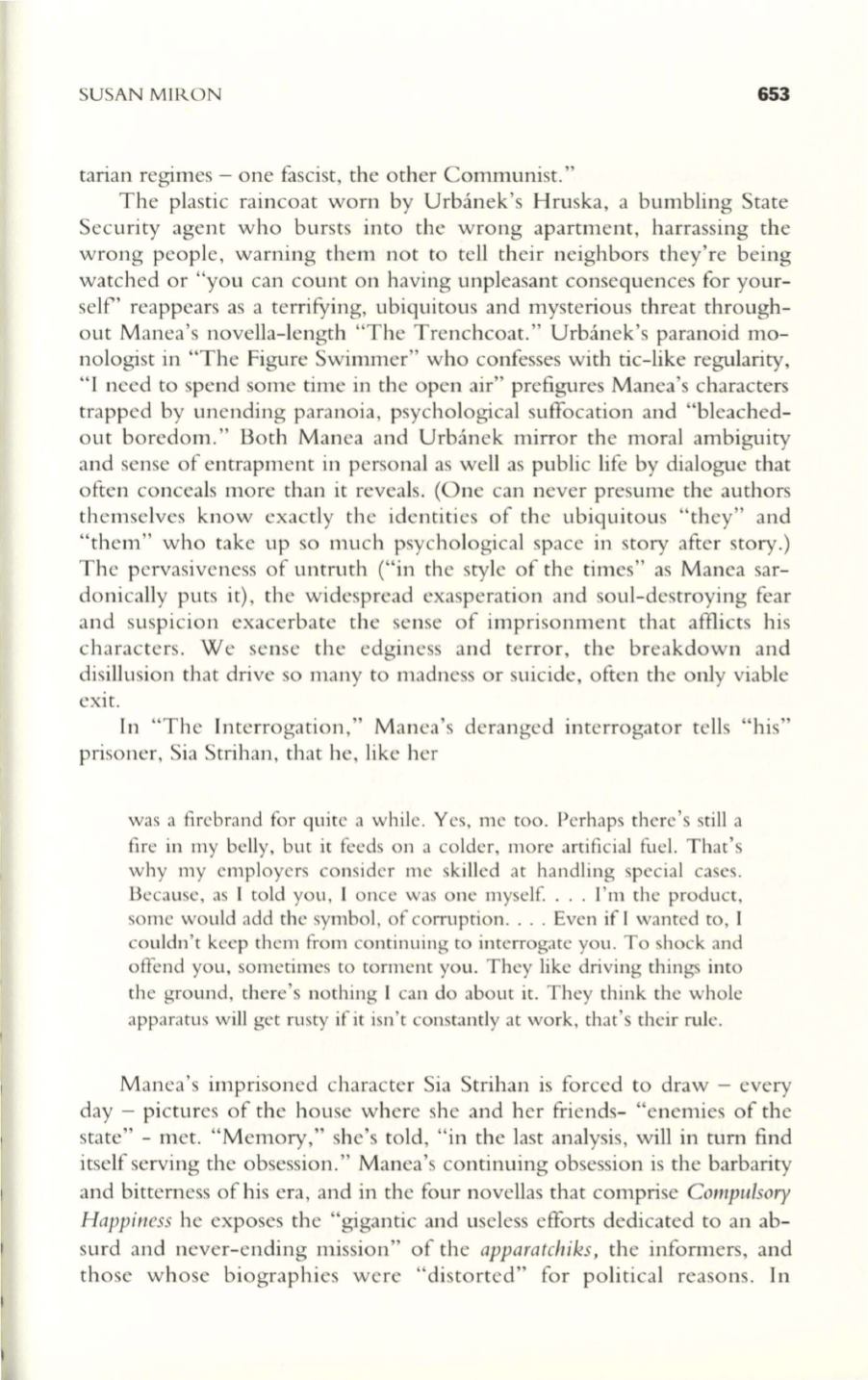
SUSAN MIRON
653
tarian regimes - one fascist, the other Communist."
The plastic raincoat worn by Urbanek's Hruska, a bumbling State
Security agent who bursts into the wrong apartment, harrassing the
wrong people, warning them not to tell their neighbors they're being
watched or "you can count on having unpleasant consequences for your–
self' reappears as a terrifying, ubiquitous and mysterious threat through–
out Manea's novella-length "The Trenchcoat." Urbanek's paranoid mo–
nologist in "The Figure Swimmer" who confesses with tic-like regularity,
"I need
to
spend some time in the open air" prefigures Manea's characters
trapped by unending paranoia, psychological suffocation and "bleached–
out boredom." Both Manea and Urbanek mirror the moral ambiguity
and sense of entrapment in personal as well as public life by dialogue that
often conceals ITlOre than it reveals. (One can never presume the authors
themselves know exactly the identities of the ubiquitous "they" and
"them" who take up so much psychological space in story after story.)
The pervasiveness of untruth ("in the style of the times" as Manea sar–
donically puts it), the widespread exasperation and soul-destroying fear
and suspicion exacerbate the sense of imprisonment that afflicts his
characters. We sense the edginess and terror, the breakdown and
disillusion that drive so many to madness or suicide, often the only viable
exit.
[n
"The Interrogation," Manea's deranged interrogator tells "his"
prisoner, Sia Strihan, that he, like her
was a firebrand for quite a while. Yes, me too. Perhaps there's still a
fire in my belly, but it feeds on a colder, more artificial fuel. That's
why my employers consider me skilled at handling special cases.
Beca use, as I told you, I once was one myself. ... I'm the product,
some would add the symbol, of corruption.... Even if I wanted to, I
couldn't keep them from continuing to interrogate you. To shock and
offend you, sometimes to torment you. They like driving things into
the ground, there's nothing I can do about it. They think the whole
apparatus will get rusty if it isn't constantly at work, th at's their rule.
Manea's imprisoned character Sia Strihan is forced to draw - every
day - pictures of the house where she and her friends- "enemies of the
state" - met. "Memory," she's told, "in the last analysis, will in turn find
itself serving the obsession." Manea's continuing obsession is the barbarity
and bitterness of his era, and in the four novellas that comprise
Compulsory
Happiness
he exposes the "gigantic and useless efforts dedicated to an ab–
surd and never-ending mission" of the
apparatchiks,
the informers, and
those whose biographies were "distorted" for political reasons.
In


